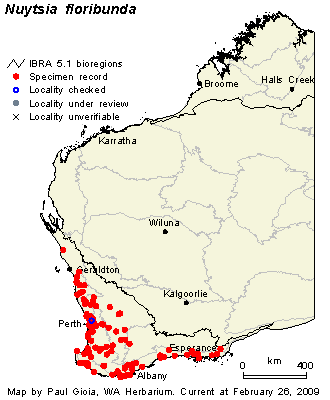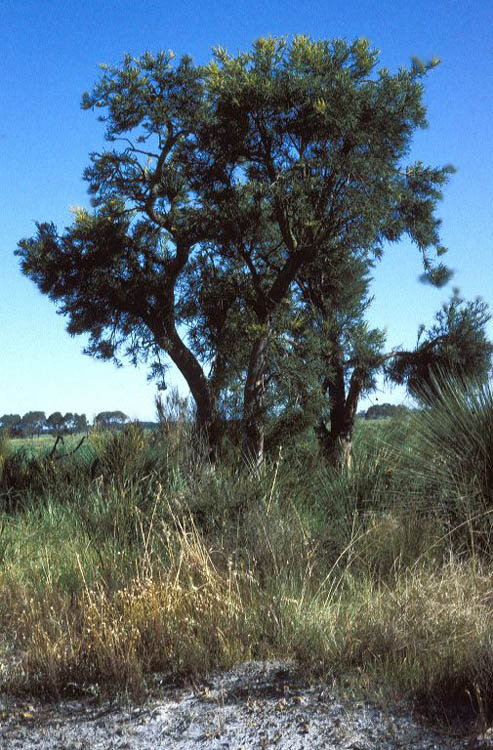Western Australian Christmas Tree
(Nuytsia floribunda)
Where does Nuytsia floribunda Live?
The Western Australian Christmas Tree is endemic to the Southwestern Australian region. This region is the home to many unique species of plants and wildlife, some that interact with the small tree. Of more than 5,570 species of vascular plants found in southwestern Australia, nearly 2,950 are endemic (Caley, 2008). Such impressive plant endemism in the region is credited to millions of years of isolation from the rest of Australia by its vast central deserts. Also, extreme climate shifts and poor soils help to promote the specialization of the region's plants (Caley, 2008). Along with the abundance of native plants, over 280 native species of birds are found in this region, and 60 species of native mammals. The region includes a drastic climate that is dry for most of the summer months, and gets the brunt of its rain in the winter months. When it is the summer months (October to February), the Western Australian Christmas Tree is in full bloom with its breath-taking orange and yellow flowers.
In the diagram above it shows the endemism and specificity of climate that Nuytsia floribunda requires for it to survive.
The Christmas tree is mostly found in white, grey or yellow sand. It can also be found in sandy loams, brown sandy gravel over clay, granite, laterite, limestone, or the bases of rock outcrops, which are all very prominent in the Southwestern Australian region. In this environment, the hemi-parasitic roots of the tree attach to the underground roots of other trees via haustoria, which will be further explained in Nutrition. Then the attached roots steal the nutrients of the surrounding host trees as far as 150 meters away. However, the Christmas tree may also parasitize other small plants such as grass, allowing the tree to survive even without the presence of other trees (Taylor, 2009). This allows Nuytsia floribunda to be able to survive in the forests, shrub lands, and the heaths of Southwestern Australia.
The picture above shows the Western Australian Christmas tree without its illuminating flowers in bloom. It also shows you the environment in which it lives.

